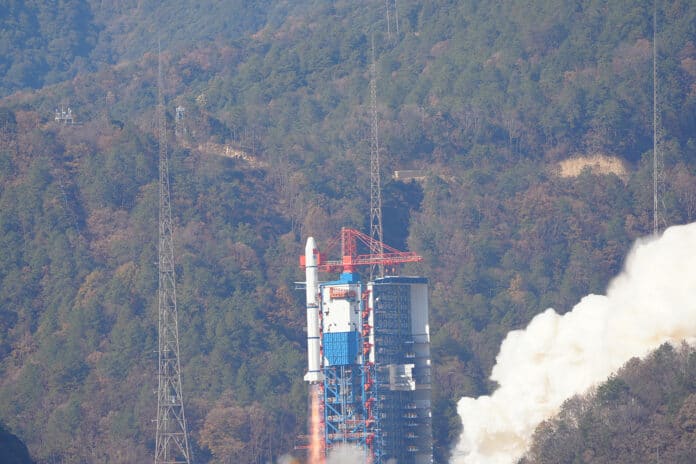China successfully launched Einstein Probe, a new X-ray satellite with optics inspired by lobster eyes, into space using a Chang Zheng (Long March) 2C rocket on 9 January 2024. The rocket blasted out from the Xichang Satellite Launch Centre at 07:03 GMT (15:03 CST) and launched the satellite into a 600-kilometer low-Earth orbit.
With the successful launch, Einstein Probe began its mission to survey the sky and hunt for X-ray bursts that stem from some of the Universe’s most powerful phenomena, including feeding black holes, colliding neutron stars, and exploding stars.
The Einstein Probe is a joint effort between the European Space Agency (ESA), the Max Planck Institute for Extraterrestrial Physics (MPE), and the Chinese Academy of Sciences (CAS).
The Einstein Probe is equipped with two instruments, the Wide-field X-ray Telescope (WXT) and the Follow-up X-ray Telescope (FXT), which work together to efficiently monitor the entire sky and routinely discover new X-ray sources.
The design of WXT’s optics is inspired by the eyes of lobsters and uses a modular layout with hundreds of thousands of square fibers to channel light onto the detectors. This allows the spacecraft to observe almost one-tenth of the celestial sphere in a single glance. When WXT spots a new X-ray source, it will be immediately targeted with FXT, which has a narrower view but is more sensitive and will capture more details.
ESA played a crucial role in developing and testing the Einstein Probe’s X-ray detectors and optics of WXT and worked in collaboration with MPE and Media Lario (Italy) to develop the mirror assembly of one of FXT’s two telescopes. MPE also contributed to the development of FXT by providing the mirror assembly for the other telescope, as well as the detector modules for both FXT units.
In addition, ESA provided the electron diverter system to deflect unwanted electrons away from the detectors. Throughout the mission, ESA’s ground stations will be utilized to assist with downloading data from the spacecraft. In return for these contributions, ESA will get access to 10% of the data generated by Einstein Probe’s observations.
The ability to spot new X-ray sources and monitor how they change over time is crucial to understanding the most energetic processes in the Universe. These powerful blasts of X-rays occur during events like neutron star collisions, supernova explosions, and matter being sucked into black holes or ejected from the crushing magnetic fields that envelop them.
Einstein Probe circles the Earth every 96 minutes with an orbital inclination of 29 degrees. Its ability to monitor almost the full night sky in just three orbits makes it a valuable tool for space observation.
The operation team will be testing and calibrating the instruments for the next six months to ensure accurate readings. After this preparation phase, Einstein Probe will spend at least three years attentively watching the entire X-ray sky.
“I am looking forward to the discoveries that Einstein Probe will enable,” says Erik Kuulkers, ESA’s Einstein Probe Project Scientist. “Thanks to its uniquely wide gaze, we will be able to catch the X-ray light from collisions between neutron stars and find out what is causing some of the gravitational waves we detect on Earth. Often, when these elusive space-time ripples are registered, we cannot locate where they are coming from. By promptly spotting the burst of X-rays, we will pinpoint the origin of many gravitational wave events.”
